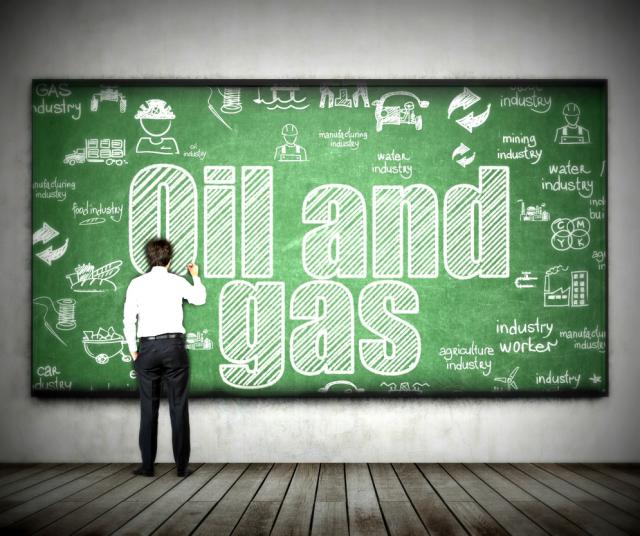
A kerfuffle between Wall Street and Permian Basin E&Ps bubbled up in second-quarter earnings calls and shed insight into the conundrum of how the industry grows hydrocarbon production and reserves even if it spends less and reduces rig count.
A version of this story appears in the September 2017 edition of Oil and Gas Investor. Subscribe to the magazine here.
Apparently, it is impossible to spell “G-O-R” in oil and gas without the letter “E.”

A kerfuffle between Wall Street and Permian Basin E&Ps bubbled up in second-quarter 2017 earnings calls and shed insight into the conundrum of how the industry grows hydrocarbon production and reserves even if it spends less and reduces rig count.
GOR, a previously obscure metric describing the gas-oil ratio, disrupted earnings calls for Permian Basin E&Ps after a former employee at one of the region’s largest independents called attention, as a consultant, to inaccurate forecasts of oil cuts made a half decade ago.
E&P managements were blindsided by financial sector concerns over rising GORs in Permian horizontal production. For Wall Street, the GOR meme implied lower crude production and a threat to reserve-based lending. Permian E&P managements, pummeled by GOR-related questions, suggested there was nothing to see in the meme; GOR was well understood and incorporated accurately in current type curves.
These E&Ps had been bulletproof in an energy market colored by Wall Street ennui. The subsequent sell-off in shares for Permian Basin E&Ps suggested the energy cycle was nearing capitulation. Comments about “not a surprise,” or “nothing new,” or” “performance according to type curve” failed to halt the equity sell off. Pioneer Natural Resources Co. saw a 20% decline in share price in the aftermath of its earnings call while Apache Corp., Parsley Energy Inc. and Energen Corp.—Permian-focused names—saw an initial 11% to 13% hair cut in stock price before recovering.
The unintended consequence of the GOR discussion—and this is good news—is that higher GORs in several cases represent increased EUR when the letter “E” (for equivalent) is incorporated. In other words, oil production is behaving according to type curve, even if oil cut as a percentage of total production loses share over time. Increased liquids production in solution gas drive reservoirs adds both a financial boost—Pioneer Natural Resources Co. management cited a $20-million gain—and greater hydrocarbon recovery.
Still, who would have thought that bubble point physics, or the point in reservoir temperature and pressure at which gas first comes out of solution, would be a topic of financial earnings discussion?
The takeaway is that there is a math gap between Wall Street, which uses the discipline in a financial context, and the oil and gas industry, which uses the discipline as part of the scientific process for framing hydrocarbon potential. The GOR math kerfuffle was reminiscent of an old joke in unconventional plays where the best thing an operator could do was to cite for Wall Street how much acreage a company controlled in a tight formation play.
The worst thing the company could do was to drill the acreage.
A half decade has passed since the industry coined the term “liquids rich” to describe the transition from the pursuit of tight formation natural gas to tight formation crude oil. Now enter the letter “E.”
The challenge is that the industry often itemizes production in a two-stream (oil/gas) framework. Add a third stream, NGL, and the challenge is greater. The letter “E” serves as the Rosetta Stone. E&Ps discuss “equivalent” as a unit of measure. Thus, total production becomes barrels of oil “equivalent.” Add in different ratios for the value of natural gas, NGL and crude oil, all of which vary due to market prices, and the issue becomes murkier yet.
Hence, a company like Chesapeake Energy Corp. describes total second-quarter production as 527,000 barrels of oil “equivalent,” although only 88,400 barrels is crude oil, or 16% of the total. Is Chesapeake a gas company or an oil company? Wall Street often hears only the “barrels of oil” portion in the boe metric.
Such idiosyncrasies make the letter “E” the most important letter in oil and gas. Suffice it to say that the laws of physics pertain. Rising GORs are a natural part of reservoir evolution. GOR varies by basin—and within basins, but increases over time before levelling after a half decade or so. Bubble points and GORs are important for targeting acreage acquisition in phase-shift plays such as the Eagle Ford, Utica and Oklahoma’s Scoop.
But so are commodity prices after acreage is acquired. For now, consider GOR as the lagniappe that produces more Permian EUR bang for the buck.
Recommended Reading
Texas GulfLink Port Wins Approval from U.S. Maritime Administration
2025-02-18 - Sentinel Midstream’s Texas GulfLink crude loading platform is the second Gulf Coast project to receive a permit.
Guyana Exported a Total of 225 Crude Cargoes in 2024
2025-01-14 - Guyana, Latin America's newest oil producer, is now the region's fifth largest crude exporter after Brazil, Mexico, Venezuela and Colombia.
What's Affecting Oil Prices This Week? (Feb. 18, 2025)
2025-02-18 - The price of Brent crude oil did reach $77 on Feb. 18 before falling back with news that members of the Trump Administration were holding talks with their Russian counterparts.
Trump Ambiguous Whether Canadian-Mexico Tariffs to Include Oil
2025-01-31 - At a news conference, President Trump said that he would exclude oil from tariffs before backtracking to say that he “may or may not” impose duties on crude.
What's Affecting Oil Prices This Week? (Feb. 10, 2025)
2025-02-10 - President Trump calls for members of OPEC+ and U.S. shale producers to supply more oil to push down oil prices to the neighborhood of $45/bbl.
Comments
Add new comment
This conversation is moderated according to Hart Energy community rules. Please read the rules before joining the discussion. If you’re experiencing any technical problems, please contact our customer care team.




